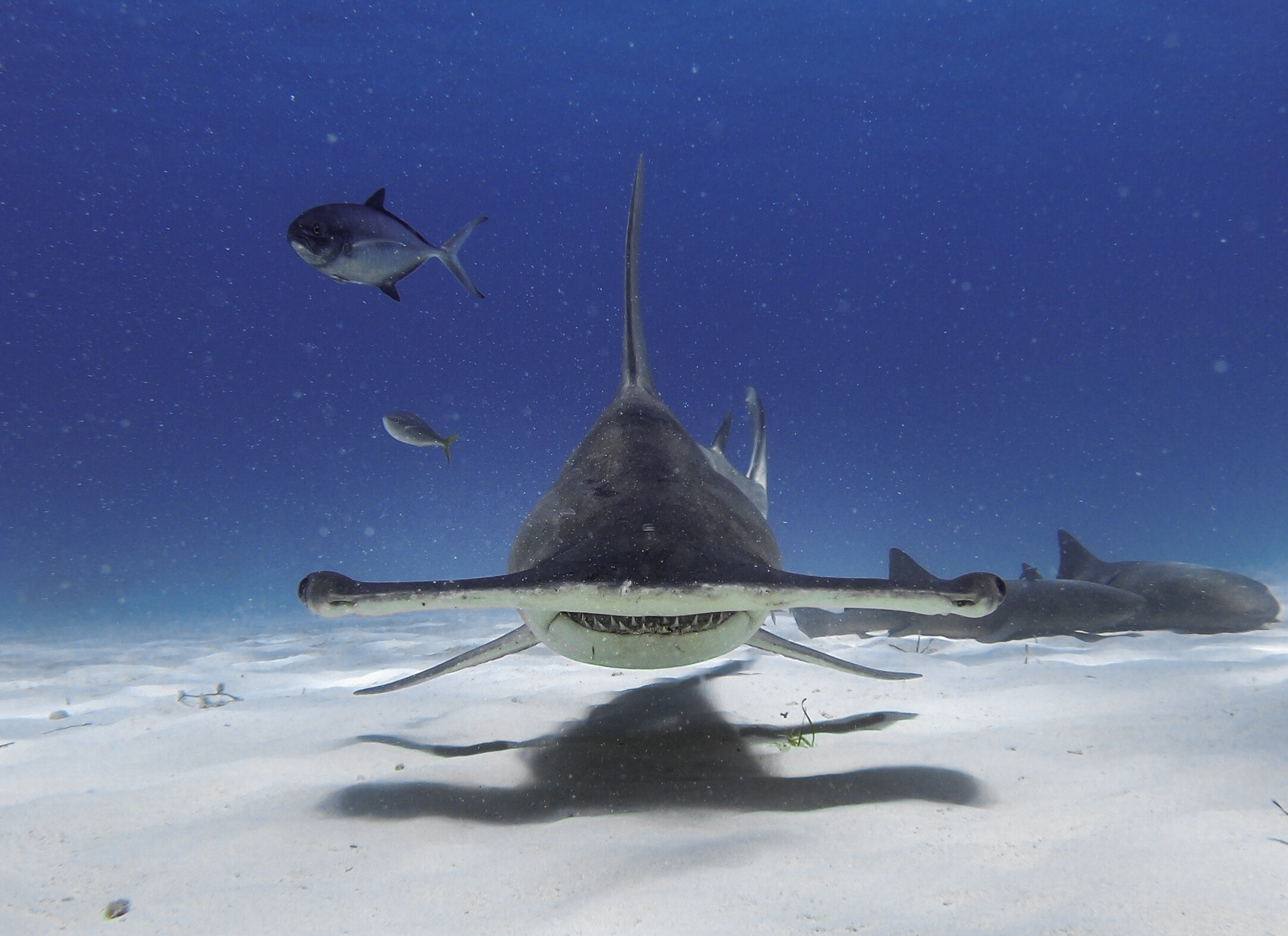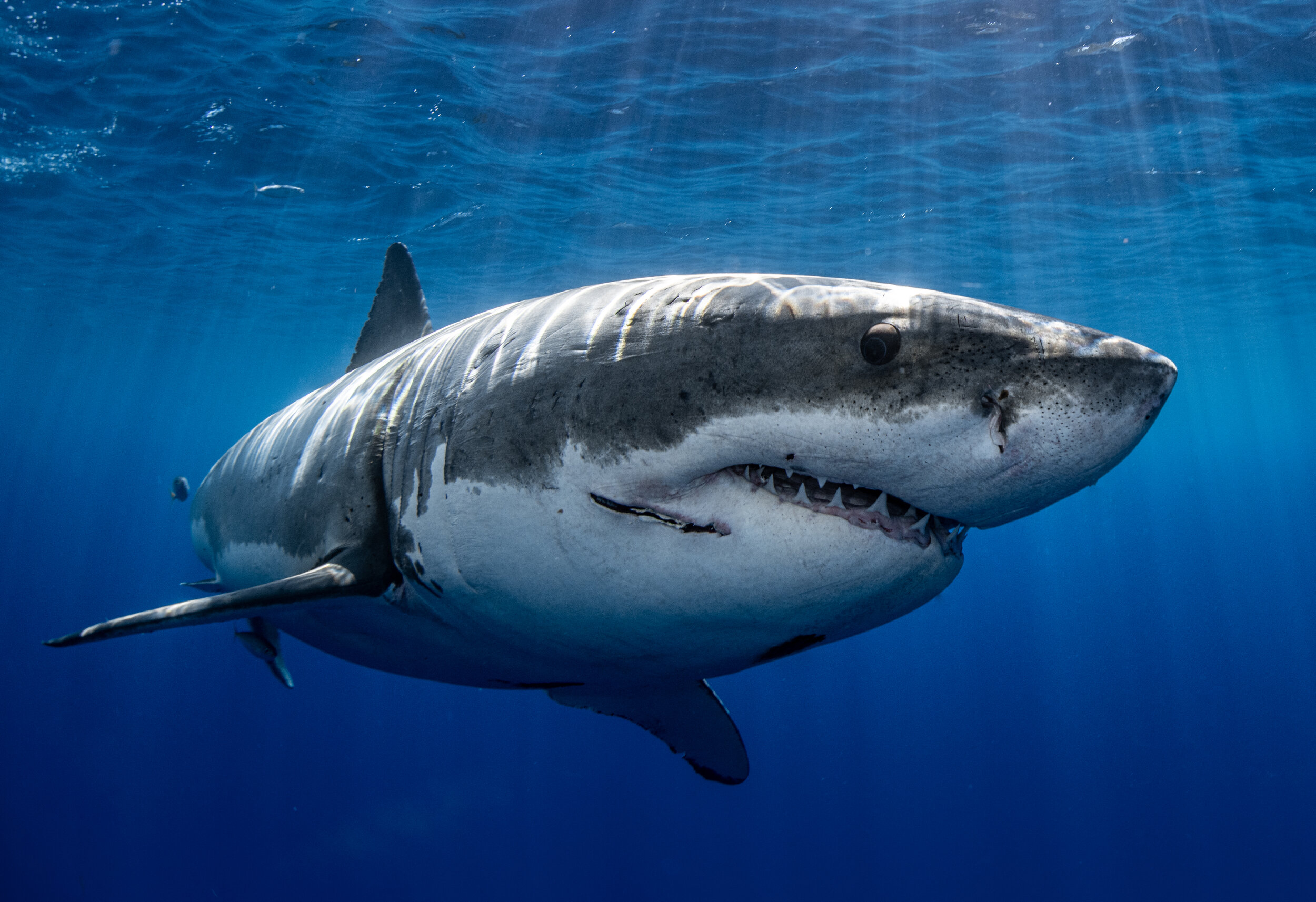Sharks are some of the most fascinating creatures in the ocean, and their incredible eyesight plays a crucial role in their survival. These apex predators have evolved over millions of years to develop an advanced visual system that allows them to thrive in various marine environments. Understanding shark eyesight is essential not only for marine biologists but also for anyone interested in marine life.
From deep-sea dwellers to shallow-water hunters, sharks rely on their vision to locate prey, avoid predators, and navigate through the vast underwater world. In this comprehensive guide, we will delve into the intricacies of shark vision, exploring how their eyes function, the unique adaptations they possess, and how these features contribute to their success as top predators.
By the end of this article, you will have a deeper understanding of shark eyesight and its significance in the marine ecosystem. Let's dive in and uncover the secrets of these remarkable creatures!
Read also:Who Played Dallas In The Outsiders A Comprehensive Look At The Iconic Character And Actor
Table of Contents
- Biological Overview of Shark Eyesight
- Anatomy of Shark Eyes
- Unique Adaptations for Vision
- Shark Eyesight in Deep-Sea Environments
- Day and Night Vision in Sharks
- Comparison with Other Marine Animals
- Scientific Research on Shark Vision
- Conservation Implications
- Debunking Myths About Shark Eyesight
- Conclusion
Biological Overview of Shark Eyesight
Shark eyesight is a critical component of their survival strategy. As highly evolved predators, sharks have developed a range of visual adaptations that allow them to thrive in diverse aquatic environments. Their eyes are structured to detect movement, contrast, and even bioluminescence in the depths of the ocean.
One of the most notable features of shark vision is their ability to see in low-light conditions. This adaptation is particularly useful for species that hunt at night or inhabit deep-sea environments where sunlight is scarce. By understanding the biological mechanisms behind shark eyesight, scientists can gain insights into how these animals interact with their surroundings.
Evolutionary Perspective
Sharks have existed for over 400 million years, and their visual system has evolved to meet the demands of their environment. The evolutionary development of shark eyesight has resulted in a highly specialized sensory system that enhances their hunting abilities and increases their chances of survival.
Anatomy of Shark Eyes
The anatomy of shark eyes is both complex and fascinating. Their eyes are similar to those of other vertebrates, but they possess unique features that set them apart. For instance, sharks have a tapetum lucidum, a reflective layer behind the retina that enhances their ability to see in low light.
Key Components of Shark Eyes
- Cornea: The outermost layer of the eye that helps focus light.
- Retina: Contains photoreceptor cells that detect light and convert it into neural signals.
- Tapetum Lucidum: Reflective layer that amplifies light, improving vision in dim conditions.
- Lens: Adjusts to focus on objects at varying distances.
Unique Adaptations for Vision
Sharks have developed several unique adaptations that enhance their visual capabilities. These adaptations allow them to detect prey, navigate through murky waters, and even communicate with each other.
Light Sensitivity
Sharks are highly sensitive to light, which is crucial for their survival in the ocean. Species such as the great white shark and tiger shark have evolved to detect even the slightest changes in light intensity, enabling them to spot prey from great distances.
Read also:John Travolta And Lily Tomlin A Legendary Bond In Hollywood
Shark Eyesight in Deep-Sea Environments
Deep-sea sharks face unique challenges when it comes to vision. In the absence of sunlight, they rely on specialized adaptations to detect bioluminescent organisms and navigate through the darkness. Some deep-sea species, such as the lantern shark, have developed highly sensitive eyes that can detect faint light signals.
Adaptations for Darkness
To thrive in the deep sea, sharks have evolved several adaptations, including:
- Larger eyes to capture more light.
- Increased density of photoreceptor cells in the retina.
- Enhanced ability to detect bioluminescent signals.
Day and Night Vision in Sharks
Many shark species are active during both day and night, requiring them to adapt their vision accordingly. Their eyes are capable of adjusting to different light levels, allowing them to hunt effectively in varying conditions.
Nocturnal Hunters
Nocturnal shark species, such as the bull shark, rely heavily on their night vision to locate prey. Their tapetum lucidum plays a crucial role in enhancing their ability to see in low-light conditions.
Comparison with Other Marine Animals
Shark eyesight is often compared to that of other marine animals, such as dolphins and octopuses. While each species has its own unique visual adaptations, sharks stand out for their ability to function effectively in both bright and dim lighting conditions.
Key Differences
- Dolphins: Rely more on echolocation than vision.
- Octopuses: Have highly developed eyes but lack color vision.
- Sharks: Combine excellent light sensitivity with advanced motion detection.
Scientific Research on Shark Vision
Recent studies have shed light on the intricacies of shark eyesight. Researchers have discovered that some shark species can detect polarized light, which helps them identify prey and navigate through the water. This ability is particularly useful in murky or turbid environments.
Notable Studies
A study published in the journal Scientific Reports revealed that sharks can detect polarized light patterns, allowing them to locate prey more effectively. Another study conducted by marine biologists at the University of Queensland found that shark eyesight is more advanced than previously thought, with some species capable of distinguishing colors.
Conservation Implications
Understanding shark eyesight has important implications for conservation efforts. By studying how sharks use their vision to interact with their environment, scientists can develop strategies to protect these animals from human activities such as overfishing and habitat destruction.
Protecting Sharks Through Science
Conservationists are using knowledge gained from research on shark vision to create protected areas and implement sustainable fishing practices. These efforts aim to ensure the long-term survival of shark populations and the ecosystems they inhabit.
Debunking Myths About Shark Eyesight
There are several myths surrounding shark eyesight that have been perpetuated over the years. One common misconception is that sharks are blind, which is far from the truth. In reality, sharks have highly developed eyes that allow them to see clearly in a variety of conditions.
Common Misconceptions
- Sharks are blind: False. Sharks have excellent vision.
- Sharks rely solely on smell: While smell is important, vision plays a significant role in hunting.
- Sharks cannot see color: Recent research suggests that some species can distinguish colors.
Conclusion
In conclusion, shark eyesight is a remarkable adaptation that has allowed these animals to dominate the marine ecosystem for millions of years. From their ability to see in low-light conditions to their advanced motion detection capabilities, sharks possess a visual system that is both sophisticated and effective.
We invite you to share your thoughts and questions about shark eyesight in the comments section below. Additionally, feel free to explore other articles on our site for more fascinating insights into the world of marine life. Together, we can deepen our understanding of these incredible creatures and work towards their conservation.


